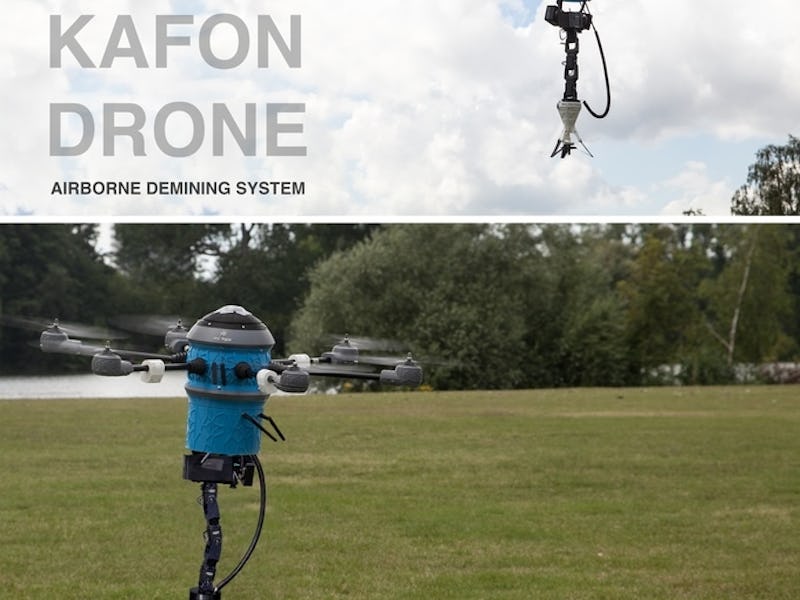Here's How This Drone Could Detect Land Mines
It sure beats poking around with a stick.

Every day, 10 people are killed or maimed by land mines around the world. Buried explosives come in many different shapes and sizes, but almost all of them are intended to be deadly. For the past 60 years, militaries have been scattering them indiscriminantly on battlefields across Europe, Asia, Africa, and Latin America, leaving them behind when their wars move on. But the 110 million forgotten land mines are still deadly, and the civilians trying to rebuild their lives in conflicted areas are the most common victims of the slowly-rusting traps hidden underground.
Before civilian and government groups can remove the mines, they have to find them — but hunting for buried explosives is a dangerous, time consuming process. That’s where the Mine Kafon Drone comes in. The concept is relatively simple: a six-rotor drone equipped with a camera and hanging metal detector can fly over ground that demining personnel couldn’t safely pass over.
Much safer than doing it on foot.
The drone’s creator, Massoud Hassani, immigrated to the Netherlands from Afghanistan in 1998, when he was 14, fleeing the constant state of conflict in the country following the Soviet occupation in the 1980s. Afghanistan has an estimated 10 million land mines still buried in the country, second to only Angola’s estimated 20 million devices. Massoud’s first device, the Mine Kafon, was a low-cost, wind-powered demining robot that was built to roll around battlefields setting off mines.
The Mine Kafon Drone works on a similar principle: a low-cost alternative to personal or vehicle demining that can cover ground quickly. One of the drone’s primary functions is using its camera to scan and map large areas for mines, so they can be cleared with conventional methods or at least marked off to keep out civilians. Civilians account for 79 percent of land mine deaths.
A rendering of what the drone's scanning software could look like.
The drone can also detonate mines itself — and it does it without sacrificing parts of it’s body, like the original rolling Kafon. It can be fitted with a robotic arm that can deliver a small detonator payload to a buried mine, which will blow up the charge safely away from demining personnel.
Like a tiny explosive present for landmines.
Hassani says the drone platform is a modular, customizable unit that can be outfitted to meet the needs of the team and terrain it’s being used with. He claims that proper use of the drone could be up to 20 times faster than traditional techniques, which he says could reduce land mines globally in the next decade.
The Mine Kafon Drone just launched a Kickstarter project, and is seeking a $77,000 goal to continue development and production of the drones.